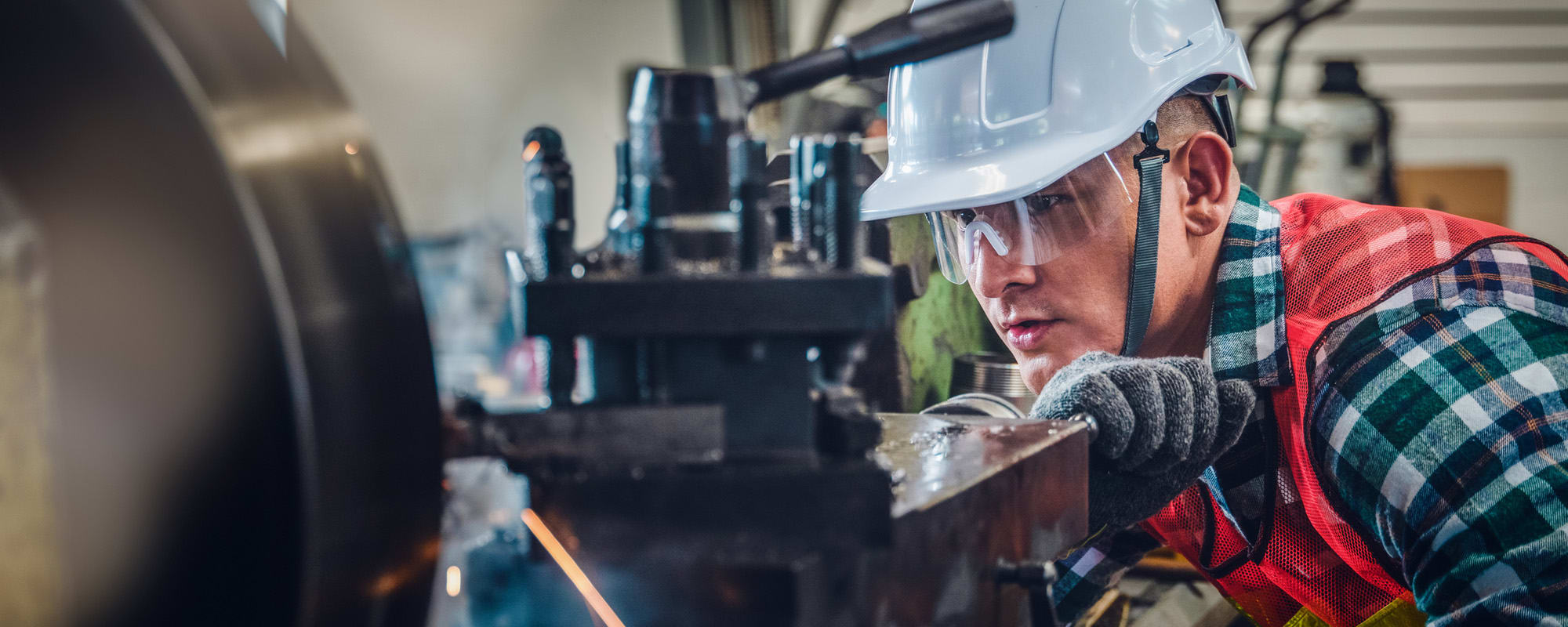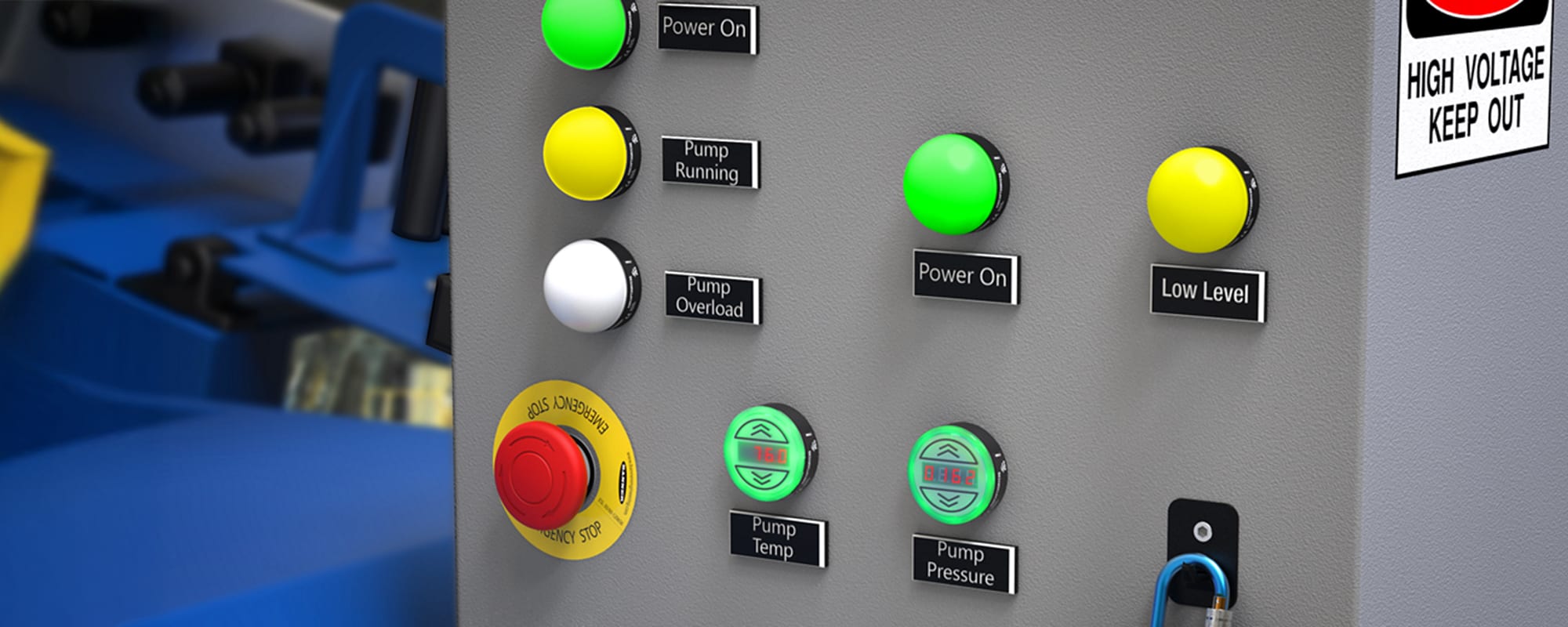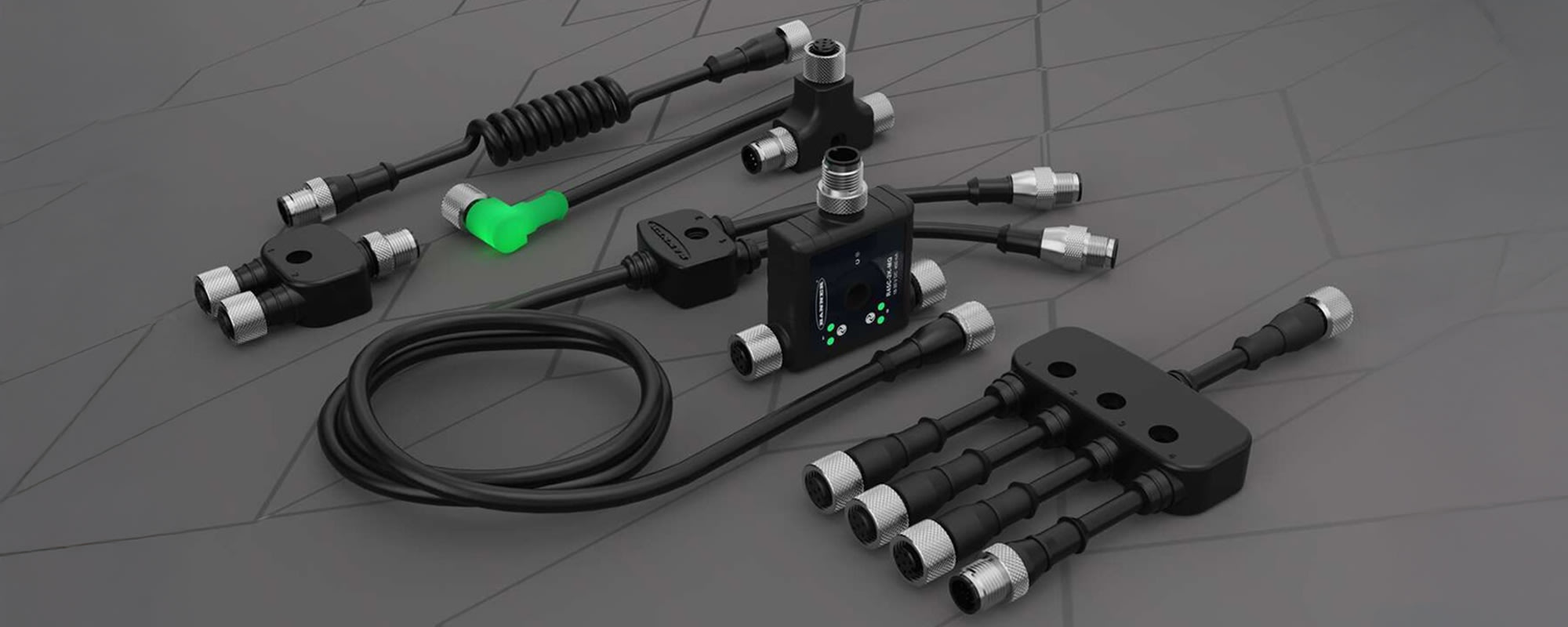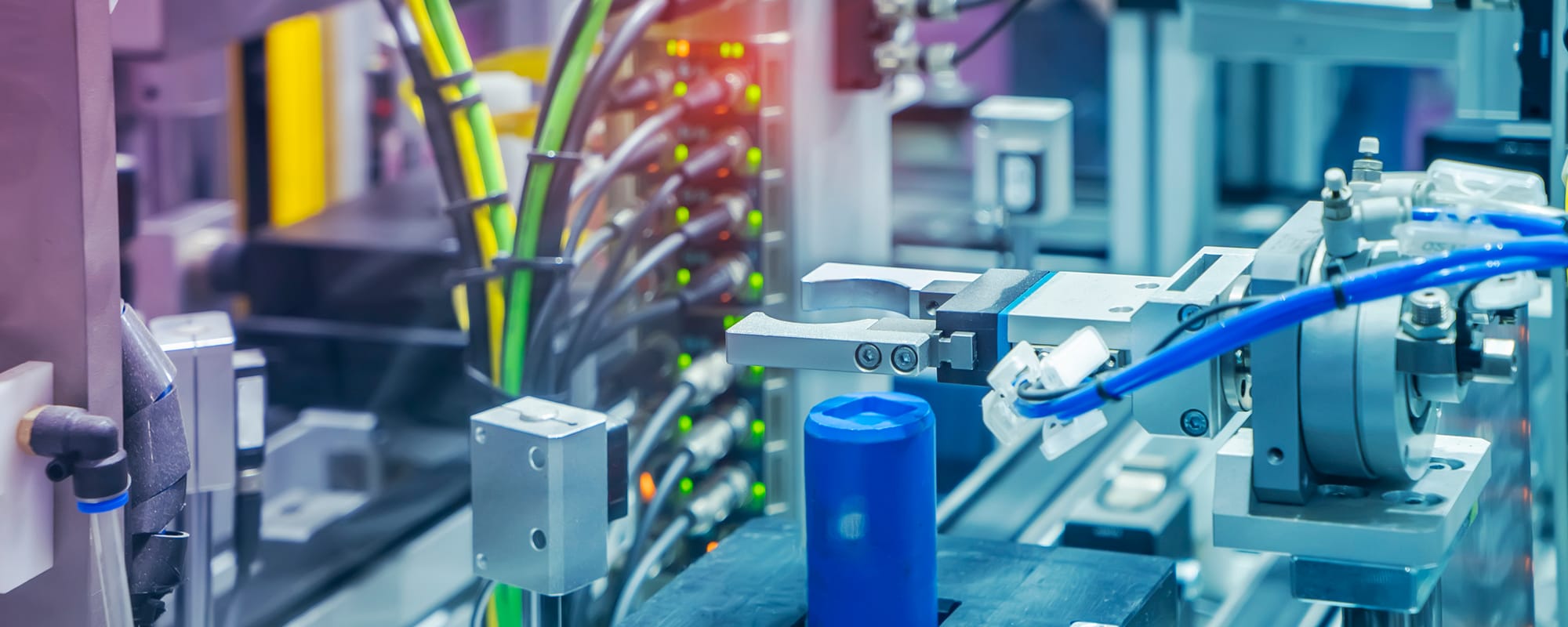John Burns, the National Lead for Strategic Marketing at Siemens, dives into machine safety, explaining why it’s critically important to virtually every industrial market, addressing common challenges and the latest trends, and introducing three essential machine safety product categories — position switches, safety relays, and contactors — sure to help make your facility safer and more efficient.
John Burns, National Lead for Strategic Marketing at Siemens
Machine safety is critically important to virtually every industrial market segment. Organizations have a legal and moral obligation to maintain a safe working environment. First and foremost, they must ensure the safety of their people. But they also need to ensure that their machinery is operating safely to avoid costly downtime, as well as expensive maintenance, repairs, and replacements.
Historically speaking, safety precautions have often come at the expense of productivity and efficiency. Today’s smart technologies are changing that. Many new machine safety devices are designed to not only meet or exceed minimum machine safety requirements but to help identify potential electrical and mechanical issues before they result in shutdowns, resulting in safer working environments as well as greater efficiency and lower costs.
We spoke with John Burns, the National Lead for Strategic Marketing at Siemens, to learn more about machine safety. John explains why machine safety is so important, dives into common challenges and the latest trends, and introduces three essential machine safety product categories: position switches, safety relays, and contactors.

Hi John. Please introduce yourself.
I’m John Burns, that National Lead for Strategic Marketing at Siemens. I studied electrical engineering at a two-year technical college in Connecticut. It was a great experience. All my professors came out of industry, so they could relate real-world examples and show us that this is not hypothetical. It was a hands-on education, and it gave me a good start.
After I graduated, I worked as an engineer for a system integrator — designing electrical circuits and programming the computerized equipment to run machinery. I was using a lot of Siemens equipment for those systems, so I got to know both the equipment and a lot of the people at Siemens, and an opportunity came up in 1994 to join that team as a product manager. I started in engineering and transitioned to sales, and that made for a really smooth transition into marketing, where I talk to both our sales team and directly to customers, as I can tell customers that I’ve sat on the other side of the desk before.
I provide a lot of technical inspiration for our customers — showing them how the equipment works and, more importantly, what it can do for them. As I tell people all the time, we have this laundry list of things that a product can do. But that only becomes important when you figure out the functions that the customer cares about. That’s when you help them understand the value.
Please also introduce us to Siemens.
Siemens is a great company to work for. They really care about their people. I’ve been here for 30 years. Our technology enables more efficient factories, more resilient supply chains, smarter buildings and power grids, more sustainable transportation, and advanced healthcare and provides real value for our customers, critical public infrastructure, and the American economy. We’re also a diverse and environmentally conscious company and are currently working to reduce our carbon footprint with our products and manufacturing processes.
You’re here to help us learn more about machine safety. Aside from the obvious reasons for maintaining the safety of the personnel who work with and around the equipment, what are some other reasons why machine safety is important?
Machine safety has a twofold function: to provide safety for the work environment and the people who work in it. This concept has been around for a long time. We’ve had OSHA in the U.S. since the ’70s to ensure a safe environment for employees. But how companies view machine safety is evolving.
One of the challenges that’s always existed is that it can get very costly when you have to shut down a machine. You’ve lost productivity and value when you have extended downtime. Companies have long weighed risks like these against the rewards when it came to deciding how much to invest in safety, and that trend has continued as the complexity and the cost of some of these systems has increased. But as machine safety technology has evolved and become more accepted, it has also become more valuable.
Many modern machine safety solutions not only exceed the minimum safety requirements for a given application or industry; they also provide real-time diagnostic data that reveals warning signs of potential electrical or mechanical issues before they require repairs or replacement or result in unplanned downtime. And when you do shut down to address these issues, the increased diagnostic capabilities of modern machine safety systems reduce downtime dramatically. Now, companies can apply machine safety technology confidently while also minimizing risk and maximizing ROI.
Where are the most common areas of concern when it comes to equipment safety?
There are several common questions I hear. Specifically, “How complicated can it be to implement the equipment? Do you need specialized training to install, operate, maintain, or repair the machine safety systems?” and, “How do I stay up on regulations and other legal requirements?” which, of course, will vary by industry.
Robot cells are one good application for machine safety solutions. These caged off areas limit physical access and incorporate various safety equipment, such as locked gates and energized coils, to ensure that nobody enters that area unexpectedly or gets trapped in it. If you get locked in a meat locker, for example, there will always be a plunger that can help you get out, and there are also typically alarm systems to alert others to the issue. It’s important to have mechanical fallbacks in case the electrical safety solutions ever fail.
What are the latest trends or design improvements related to machine safety?
There have been great improvements in so many areas, but one thing I’ll showcase is something that people see all the time in their everyday lives. Traditional emergency stops, or e-stops as we call them, are in so many places — the fuel cutoff at gas pumps, the buttons that stop luggage conveyor belts at the airport, etc. Typically, these e-stops would be hardwired, and you’d have normally closed contacts in series with each other; so, if any one of them opened up, it would send a shutoff signal. What was happening in industrial settings, is that these hardwired connections were slowly becoming loosened, dropping voltages, and causing shutdowns, and then maintenance personnel was faced with a complex series of contacts that didn’t make it easy to identify which one triggered the shutoff.
Now, with the smarter systems we have in place, these are all wired as individual shutoffs in a network and paired with easily configurable, user-friendly software. This reduces installation time as well as downtime because the system can almost immediately identify the malfunctioning part, which also makes maintenance faster and easier. So, with these advancements, you’re still providing the same level of safety, but now you can really limit your downtime.
Please tell us more about the different types of position switches and the role they play in safety.
There are two categories of position switches. One is mechanical, one is non-contact. Mechanical switches typically have a lever arm or similar mechanism that’s used to detect the position of objects — for example if a gate is closed or a cart has passed through safely.
Non-contact switches usually utilize newer technologies, like magnetics or RFID, to detect the presence or absence of objects without actually touching them. These types of switches have a much longer lifespan than mechanical switches because you don’t have the wear and tear of physical motion or contact. And since the switches don’t utilize physical contact, you can also adjust the distance the switches are from the objects detected.
Non-contact switches used to be exclusively magnetic, but newer RFID switches are gaining ground because the mating object has to be an exact match and can’t be duplicated, which makes them much harder to fool than other types of switches — and especially mechanical switches that rely on physical contact.
Diving deeper, you have interlock switches. These switches have a mating device that physically slides into a holder and are used to detect the position of safety barriers, like doors, guards, or covers, and prevent machinery from running or starting up when access to the area isn’t appropriately restricted. They can also be used to prevent safety barriers from opening while machines are running. The two halves of interlock switches are installed on different sides of these barriers, and they only mate — completing the circuit that sends a signal to either prevent operation or prevent access if the barrier were properly closed.
What are safety relays? Why are they important?
Every safety system features three types of products. There are input devices, like the various types of switches we just discussed, and output devices — the objects that will actually remove power from machines. And in between there’s the evaluation devices. These are special certified devices that monitor the inputs and outputs for safety risks and make determinations on crucial decisions as to whether power should stay on or be cut to ensure a safe environment. Which evaluation device you should use depends on the complexity of the safety system you’re attempting to implement. Safety relays are the ideal device when the system is less complex.
Safety relays may be simpler than, say, PLCs, but they still provide a high level of safety and are also easier to replace and configure. Configurability, in fact, is one of the most important features for picking the right safety relay.
We’ve also seen recent innovations in programmable safety relays, which serve as kind of a bridge between or a hybrid of safety relays and PLCs and allow you to utilize software logic capable of making determinations for multiple devices rather than hardwired logic.
Expansion modules are also an exciting new development because they allow you to easily wire additional inputs and outputs that are customizable as your system as your safety needs grow more complex.
What are contactors, and what role do they play in safety?
Contactors are the heavy lifters for removing power from machines. They’re the devices responsible for interrupting power from motors or other sources and providing feedback to confirm that the power was, in fact, shut off.
Contactors can also help you quantify and measure your safety levels in the same way a thermometer measures temperature. Safety Integrity Level (SIL) or Performance Level (PL) are both measures of safety system performance or how reliably the circuit will work when you need it to work in the event of a shutdown, and it can do so out to 10 digits of accuracy. One way to increase safety system reliability is redundancy. So, rather than deploying just one contactor, you deploy several to ensure there are additional points of disconnection. At the same time, it’s also the job of contactors to ensure that machines stay shut off until it’s completely safe for them to resume their functions.
What do you think is the most important thing people need to know about machine safety?
The biggest thing about machine safety is that it’s required by law. Another thing is that, with the product improvements we’ve seen in recent years, you can build safety systems that ensure very safe machines without excessive cost. In fact, given the way that these newer safety solutions can help you reduce downtime, they might even save you money over time. People used to have this idea that prioritizing safety would cost you in other areas — especially productivity. Now you don’t have to compromise; you don’t have to choose one or the other.
Can you tell us about some of Siemens’ most popular machine safety products from the categories you spoke about? What makes Siemens’ product offerings unique?
We offer several varieties of SIRIUS safety switches, safety relays, and contactors.
The SIRIUS 3SE5 Series safety switches are position or limit switches with a versatile design that is compact and customizable so customers can fit them just about anywhere and use them for just about any scenario they might encounter. With this product line, the base component that houses the wiring contacts is standard and made to accommodate a series of interchangeable head designs. This makes them much more adaptable for OEMs and end users because they don’t need a different product for each of their applications, which also reduces their inventory and makes repair and replacement easier.

SIRIUS 3SE6 Series magnetic non-contact safety switches experience less wear and tear than mechanical switches that rely on physical contact. They’re designed to be mounted on movable protective guards, are built in a compact fashion to fit anywhere, including round and square confined spaces, and perform their evaluations using our 3SK safety relays, which I’ll introduce in a moment.

SIRIUS 3SE63 RFID non-contact safety switches are powered by smart technology as opposed to magnets, which makes them ideal for metalworking settings. In addition to suffering less wear and tear than mechanical safety switches, they also offer more precise target detection than both mechanical contact and magnetic non-contact safety switches. Customers can utilize the smart RFID technology to identify and, for instance, give access to a few select things or people. Its coding variants also give it extremely high protection against interference, manipulation, and harsh environments. It’s really exciting technology and very well suited to the evolving needs of our customers.
Our SIRIUS Safety Relays range offers two major product families. 3SK1 Safety Relays are available in standard or advanced models typically used to control one zone by shutting down the whole connected machine or system in the event of a safety hazard or emergency. The standard isn’t expandable, but the advanced is, and they’re both easy to configure. 3SK2 Safety Relays allow for simple software programming applications and zone control that enables them to localize the shutdown rather than shut down the whole machine or system like the 3SK1. For example, if you’re using a conveyor belt, it can isolate the problem, shut down just the part of the belt experiencing a problem, and let the rest of it continue to operate. It’s easy to use and configure like the 3SK1, but it features a higher number of inputs and outputs to offer more selectivity.

Our SIRIUS Contactors, especially the 3RT, have a really innovative bit of design that makes them really convenient and sets us apart. Typically, as contactors get larger and larger, you need greater and greater amounts of current to energize the coils that open or close them. But many safety modules are limited in the current they can supply, and it’s often less than what larger contactors require. In these cases, customers often use a pilot relay to open or close the contactor coil, but this solution means an extra device and even more wiring. What we’ve done is incorporated pilot relays directly into our contactors. It’s a unique function, and it means that customers will always get the input they need but with reduced wiring and panel space requirements.
Is there anything else you’d like to share about machine safety?
I just want to add that the world of machine safety can be daunting, but at Siemens we have a lot of support capability. We have a lot of good support tools, including a safety application manual where customers can get started with an introduction to common terms and things like that. It’s like Safety 101, complete with useful application examples. It lists components and sample wiring diagrams, things like that to help people. Safety is a shared priority that we’re trying to help all our customers with.
Maximize Your Machine Safety with Siemens and RS
Siemens is the world’s single-source leader for industrial automation technology products; a leading supplier of machine safety products, including switches, contactors, and safety relays; and a world-class developer of technologies that drive innovation and transform industries. RS offers an extensive selection of Siemens products, including the machine safety solutions John introduced here as well as circuit breakers, fuses, and protection, industrial controls, motors and motor controls, switches, PLCs and HMIs, power products, and relays. For assistance identifying, procuring, deploying, and maintaining Siemens machine safety solutions sure to satisfy your unique application demands, please contact your local RS representative at 1.866.433.5722 or reach out to the RS technical support team.









